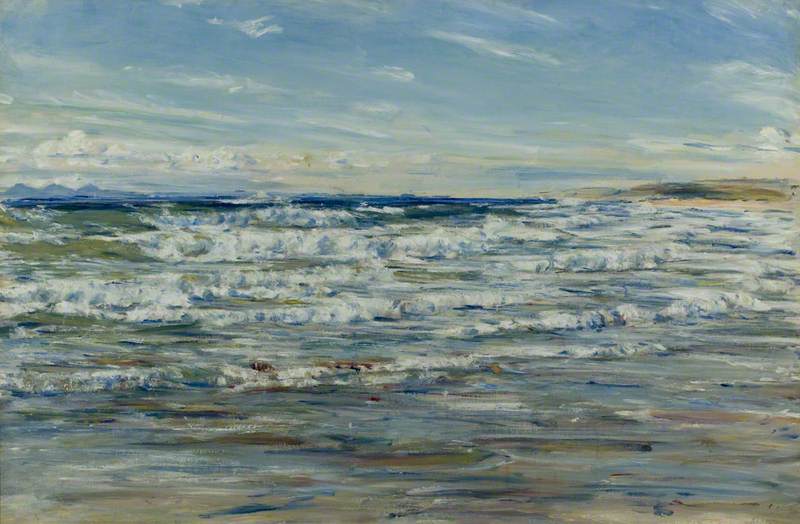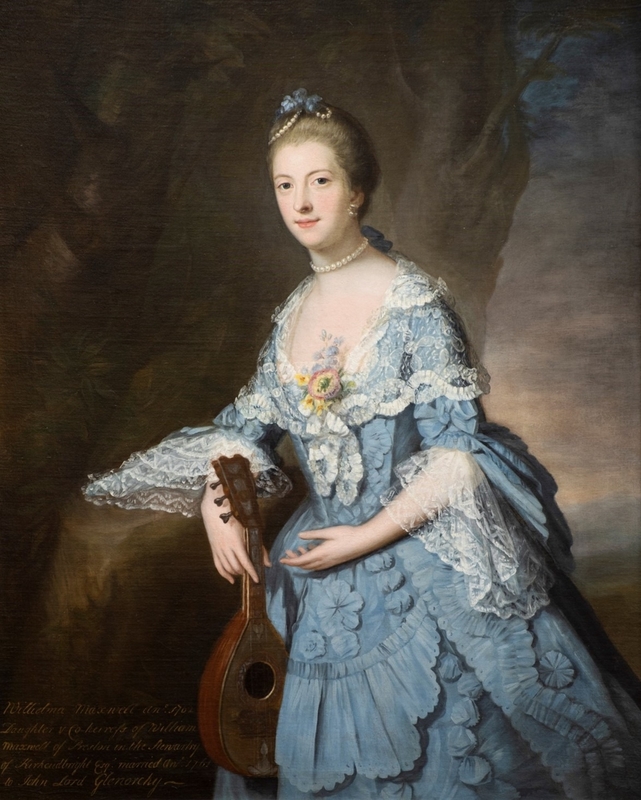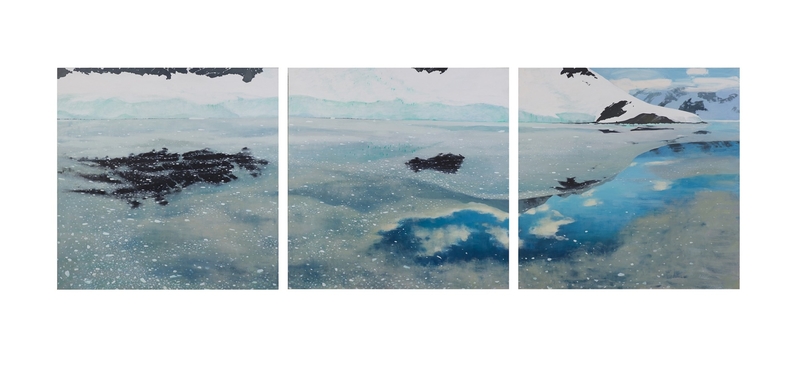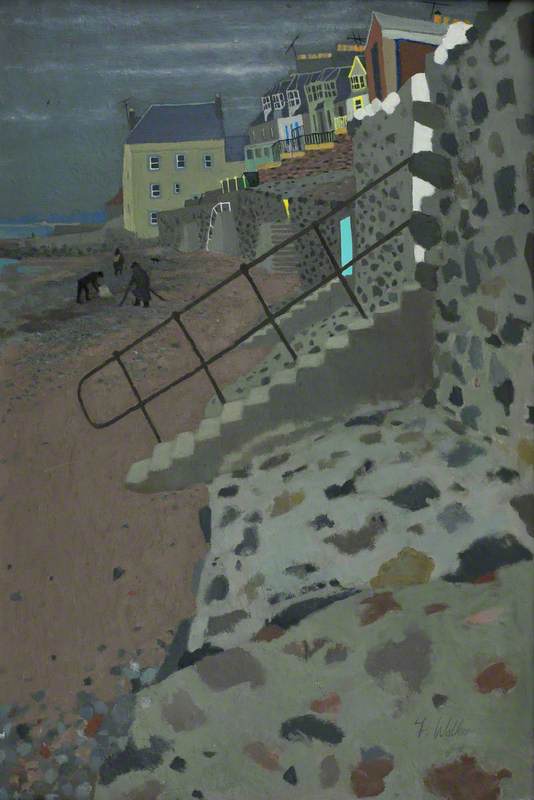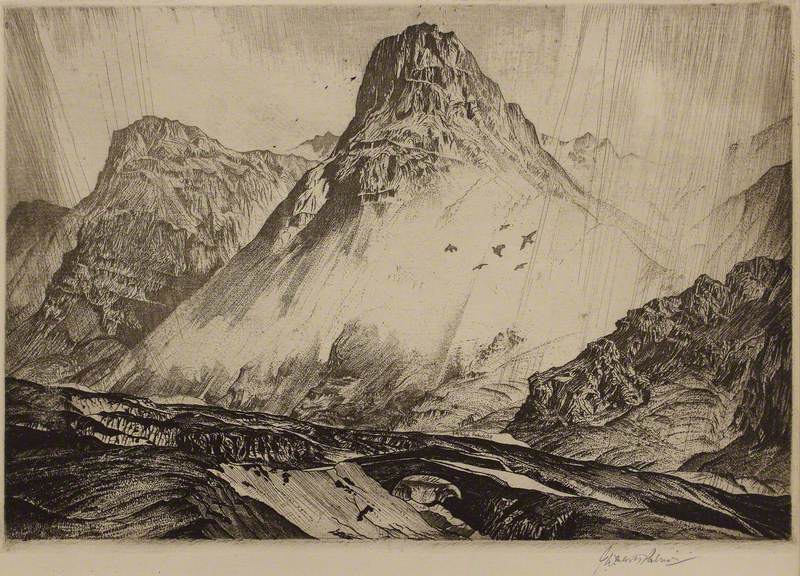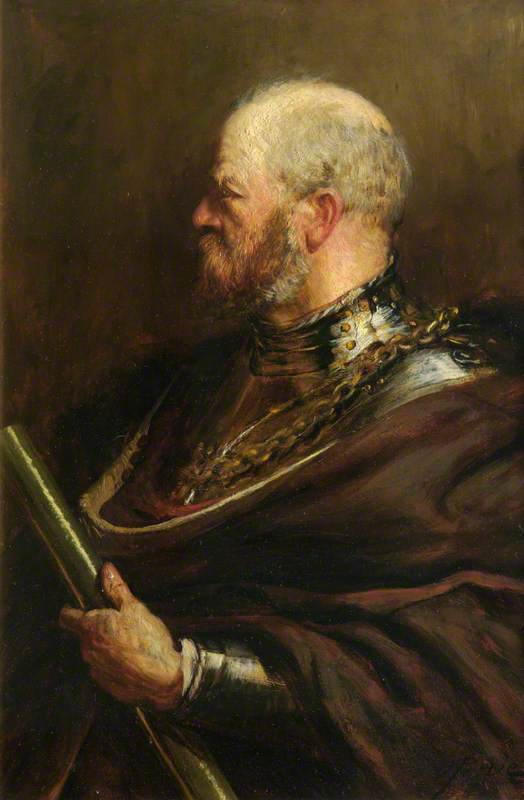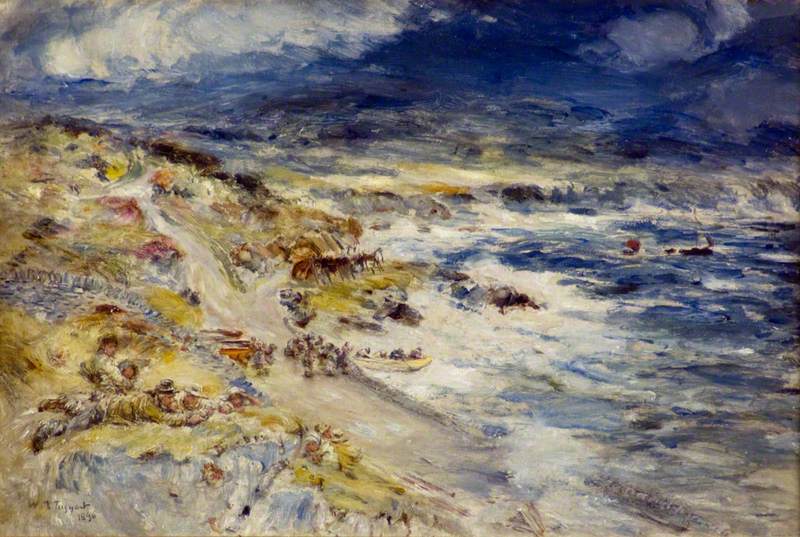Established in 1874, The McManus comprises over 10,000 items spanning four centuries of production. At its core is one of the finest collections of 19th and 20th century Scottish painting in the country. This is the legacy of Dundee’s nineteenth century industrialists and the strength of the City’s art college. In recent years collecting has focused on acquiring contemporary work that amplifies themes from Dundee’s history, supporting local identity and a sense of place.
Art Unlocked is an online talk series by Art UK in collaboration with Bloomberg Philanthropies. This Curation is based on a talk by Anna Robertson, Fine & Applied Art Manager at the McManus, on 3rd November 2021. You can find a recording at:https://youtu.be/O2xh6Z0VsDM
-
'And All the Choral Waters Sang' 1902
McTaggart is considered a ground-breaking artist who found his own way to a form of impressionism independent of any knowledge of developments in France. Contemporary critics were taken aback that his paint was so loosely applied that areas of primed canvas could be seen.
This late work was painted outdoors, the enormous canvas strapped to an easel and weighed down with rocks. The title, a quotation from the poet, Swinburne, evokes the music of the crashing Atlantic waves on Machrihanish beach, near Campbeltown, McTaggart’s birthplace.
William McTaggart (1835–1910)
Oil on canvas
H 119.4 x W 180.3 cm
The Orchar Collection: Dundee Art Galleries and Museums (Dundee City Council)
-
Willielma Campbell (1741–1786, née Maxwell), Lady Glenorchy 1762
Read is credited as Scotland’s first professionally trained woman artist. A contemporary commentator noted “All the fine ladies have made it as much the fashion to sit to Miss Read, as to take air in the park.” She created over 300 portraits, many of which were popularised through mezzotint prints, yet after her death many of her paintings were reattributed to her male peers including Reynolds, Ramsay and Gainsborough. We are delighted to have Read represented in our Victoria Gallery display.
Willielma, Lady Glenorchy was painted in the first year of her marriage. Widowed in 1771, she became a wealthy woman of independent means and supported education and the establishment of Presbyterian churches across Britain.
Catherine Read (1723–1778)
Oil on canvas
H 127.2 x W 101.9 cm
Dundee Art Galleries and Museums Collection (Dundee City Council)
-
Disbanded 1877
Disbanded was one of the earliest works to enter Dundee’s permanent art collection, presented by industrialist James Guthrie Orchar in 1883. Its subject is the defeat and retreat of the Jacobite clansmen after the Battle of Culloden in April 1746.
Pettie was one of the Scott Lauder Group of artists, who trained under Robert Scott Lauder at the Trustees Academy in Edinburgh. As a result of their patronage by Dundee’s industrialist collectors, The McManus holds the largest collection of their work. John Pettie and William Quiller Orchardson made their name as Royal Academicians in London, while their peers including William McTaggart, Hugh Cameron, George Paul Chalmers and the Burr brothers (Alexander and John) remained in Scotland.
John Pettie (1839–1893)
Oil on canvas
H 94.5 x W 67.3 cm
Dundee Art Galleries and Museums Collection (Dundee City Council)
-
Autumn, Kinnordy 1936
James McIntosh Patrick spent his life living, teaching and painting the City and its surrounding countryside. His paintings were accessible through reproductions and thousands have copies of his work in their home. Many ex-pat Dundonians remember their home town through his best-known work Tay Bridge from My Studio Window – also in The McManus collection and available to view on the Art UK website.
Autumn, Kinnordy was the third in the famous “Four Seasons” series – all available to view on Art UK’s website – which made Patrick’s reputation as a landscape painter during the 1930s. All four are based on sketches of landscape features, which were later worked up in the studio into elaborate, seemingly realist compositions.
James McIntosh Patrick (1907–1998)
Oil on canvas
H 76.8 x W 102.2 cm
Dundee Art Galleries and Museums Collection (Dundee City Council)
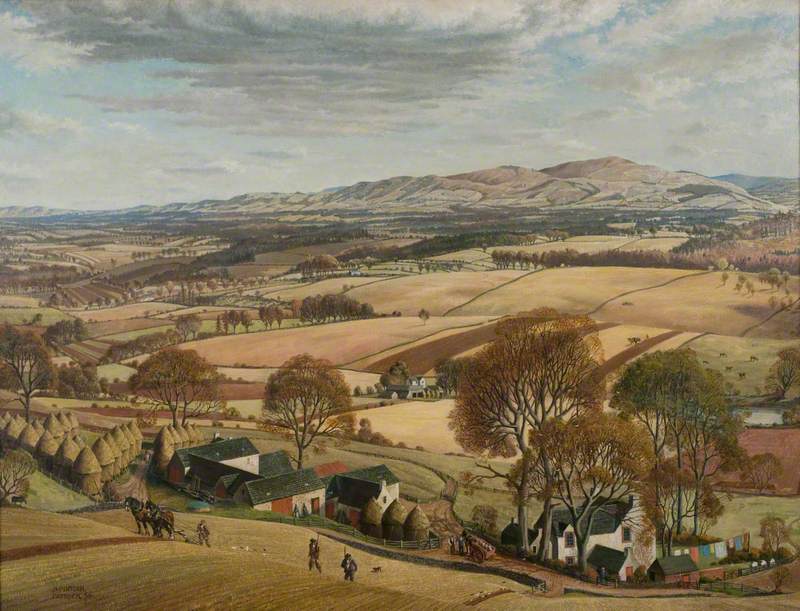 © the artist's estate / Bridgeman Images. Image credit: Dundee Art Galleries and Museums Collection (Dundee City Council)
© the artist's estate / Bridgeman Images. Image credit: Dundee Art Galleries and Museums Collection (Dundee City Council)
-
Waldella, Dundee 2009
Dundee-born artist David Batchelor was commissioned to create Waldella, Dundee during the redevelopment of The McManus between 2005–2010. A contemporary reworking of our historic Victorian grand stair with its stained glass, it is an arresting artwork which demonstrates Batchelor’s central concern with colour. His work takes many forms but the materials that he uses are always rooted in the industrially manufactured world. Here, familiar coloured plastic bottles are contrasted with the mechanics of how the work is powered – black electrical flex and sockets. The result is mesmerising and has been adopted as a powerful visual signifier of Dundee’s growing cultural confidence.
David Batchelor (b.1955)
Mixed media
H 10 x W 80 x D 40 cm
Dundee Art Galleries and Museums Collection (Dundee City Council)
-
Andvord Bay, Antarctica 2009
In 2007, Walker realised a life’s ambition to visit the Antarctic and created a suite of paintings inspired by the experience. Walker has long been influenced by Japanese art and its balance of positive and negative space. In her diary she noted, “The Bay is a splendid place of mountains and glaciers and we had a fine sunny day for our visit.” Walker has an eidetic memory and remarkably this triptych was created in the studio from memory supported by a small number of sketches and 6x4 photographs. At a time when the issues of climate change have never seemed so urgent, these spectacular paintings contribute to our understanding of the Polar Regions, and offer a visual record of the world’s most rapidly changing environments.
Frances Walker (b.1930)
Oil on marine ply
H 122 x W 366 cm
Dundee Art Galleries and Museums Collection (Dundee City Council)
